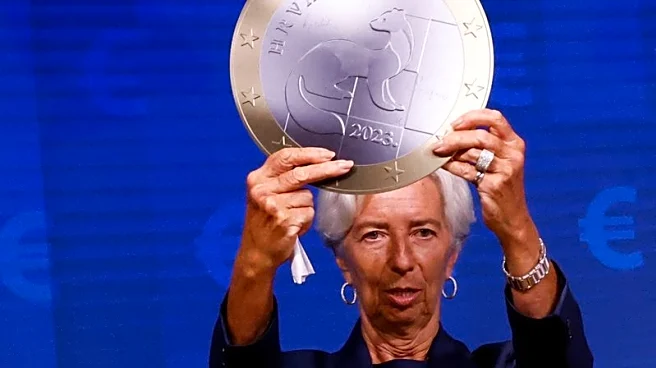What's Happening?
The U.S. hotel industry is experiencing a decline in revenue per available room (RevPAR), with a 1.7% drop in the week ending September 13, 2025. This marks the largest decrease in the past eight weeks, primarily driven by a fall in occupancy rates. Despite a marginal increase in the average daily rate (ADR) by 0.1%, occupancy has been consistently declining since April, with only two exceptions. The Top 25 Markets, including cities like Orange County, Atlanta, and Las Vegas, saw a 3.5% decrease in RevPAR, with weekday performance particularly weak due to reduced group demand. In contrast, global markets outside the U.S. reported a 6.8% increase in same-store RevPAR, driven by a 4.5% rise in ADR, with countries like Italy and France showing significant growth.
Why It's Important?
The decline in RevPAR within the U.S. hotel industry highlights ongoing challenges in the sector, particularly in major markets. This trend could impact the profitability of hotel operators and influence investment decisions in the hospitality industry. The persistent drop in occupancy rates suggests potential shifts in consumer behavior or economic conditions affecting travel. Conversely, the recovery in global markets indicates a divergence in performance, which may lead U.S. hotel operators to explore international opportunities or adjust strategies to mitigate domestic challenges. The contrasting performance between U.S. and global markets underscores the importance of understanding regional dynamics in the hospitality industry.
What's Next?
The outlook for the remainder of September is cautious, with potential impacts from events like Rosh Hashanah affecting weekday travel. For September's RevPAR to remain flat, a daily increase of 0.7% is needed over the next 17 days, which may be challenging given current trends. Hotel operators may need to focus on strategies to boost occupancy and adapt to changing demand patterns. Monitoring economic conditions and consumer sentiment will be crucial for forecasting future performance and making informed operational decisions.
Beyond the Headlines
The decline in group demand, which has fallen for ten consecutive weeks, raises questions about the long-term viability of group travel and events in the U.S. This trend could lead to shifts in marketing strategies and pricing models within the industry. Additionally, the strong performance in regions outside the Top 25 Markets, driven by local events, suggests opportunities for targeted marketing and partnerships to capitalize on regional demand spikes.












